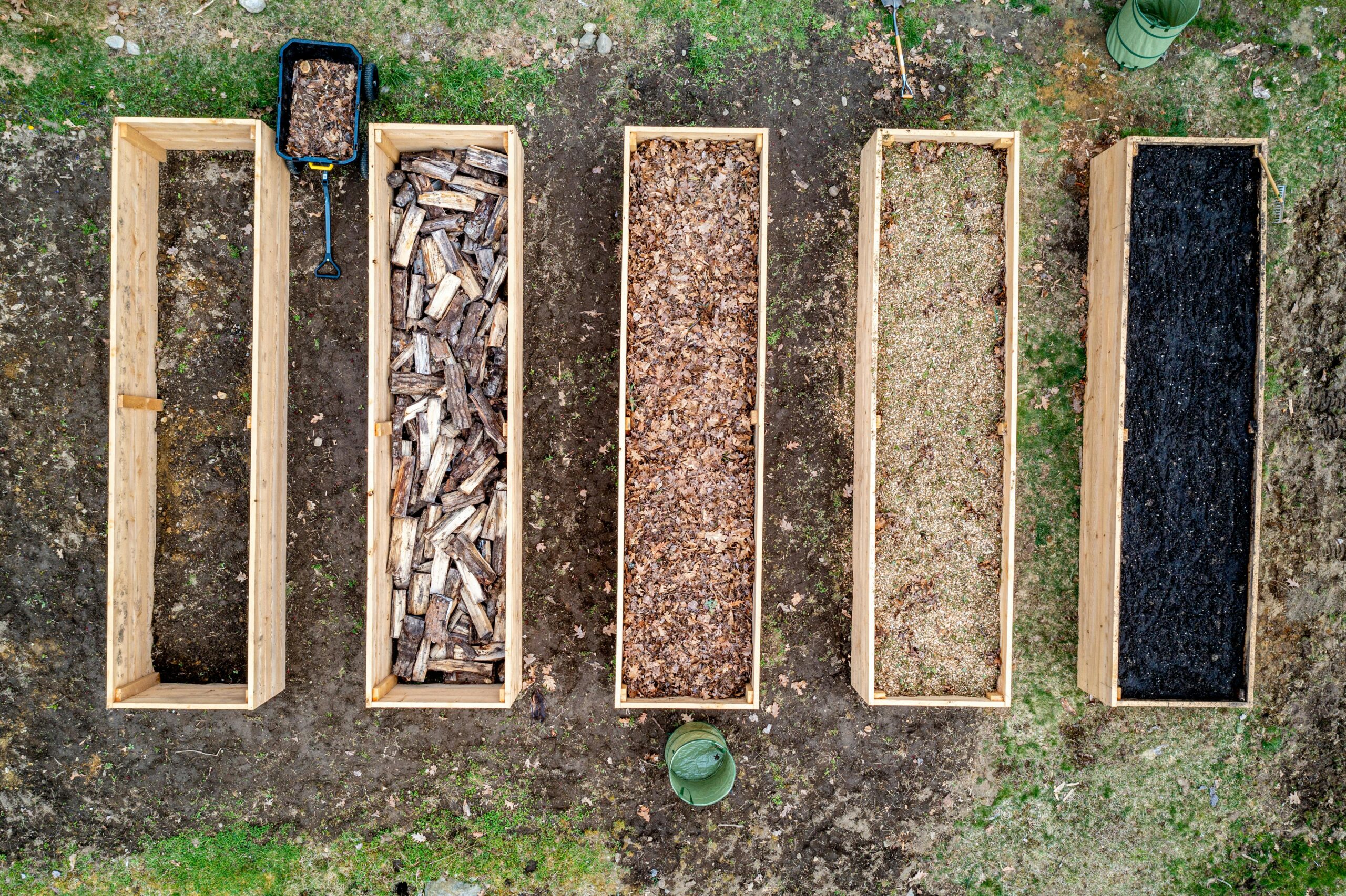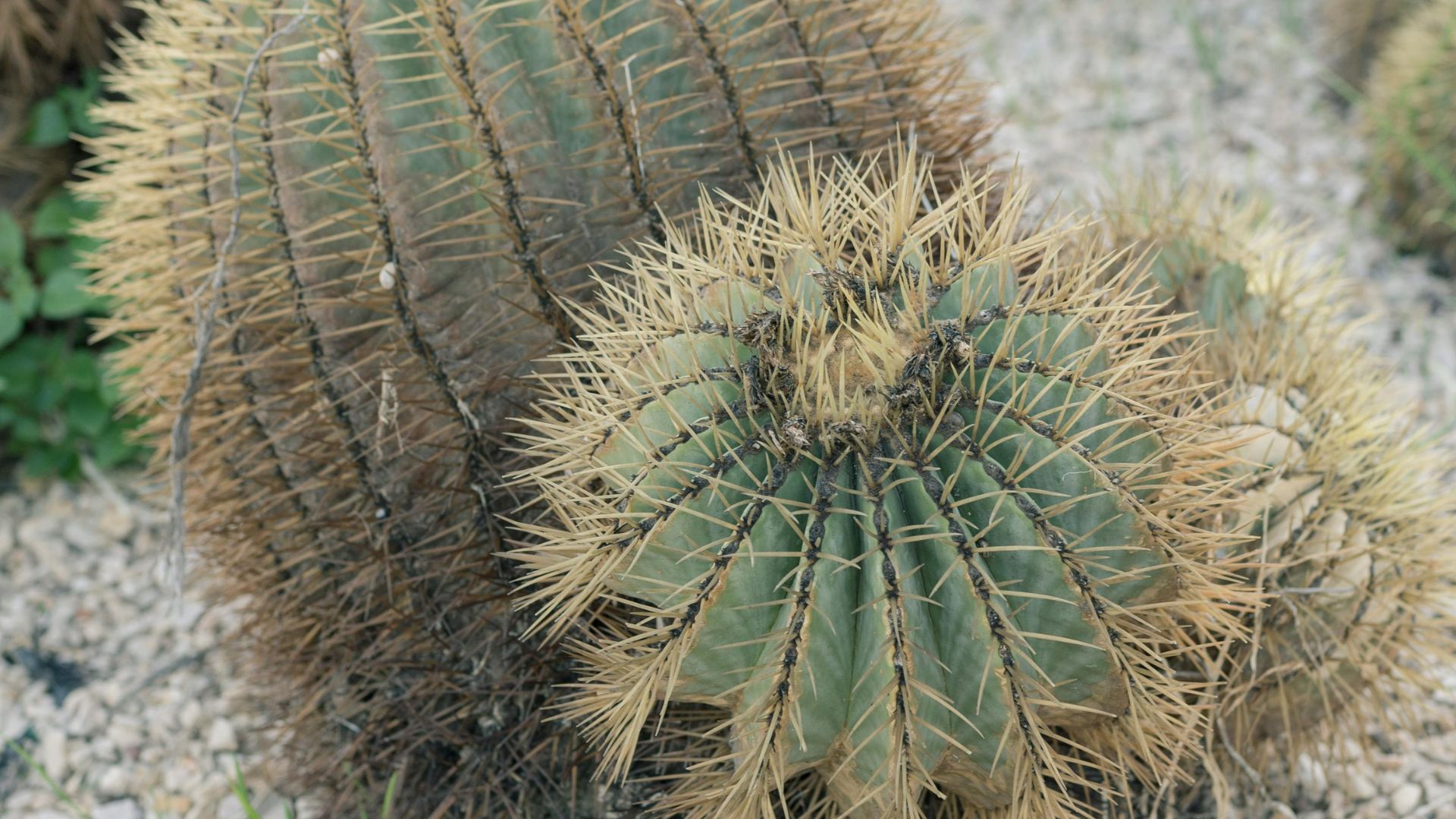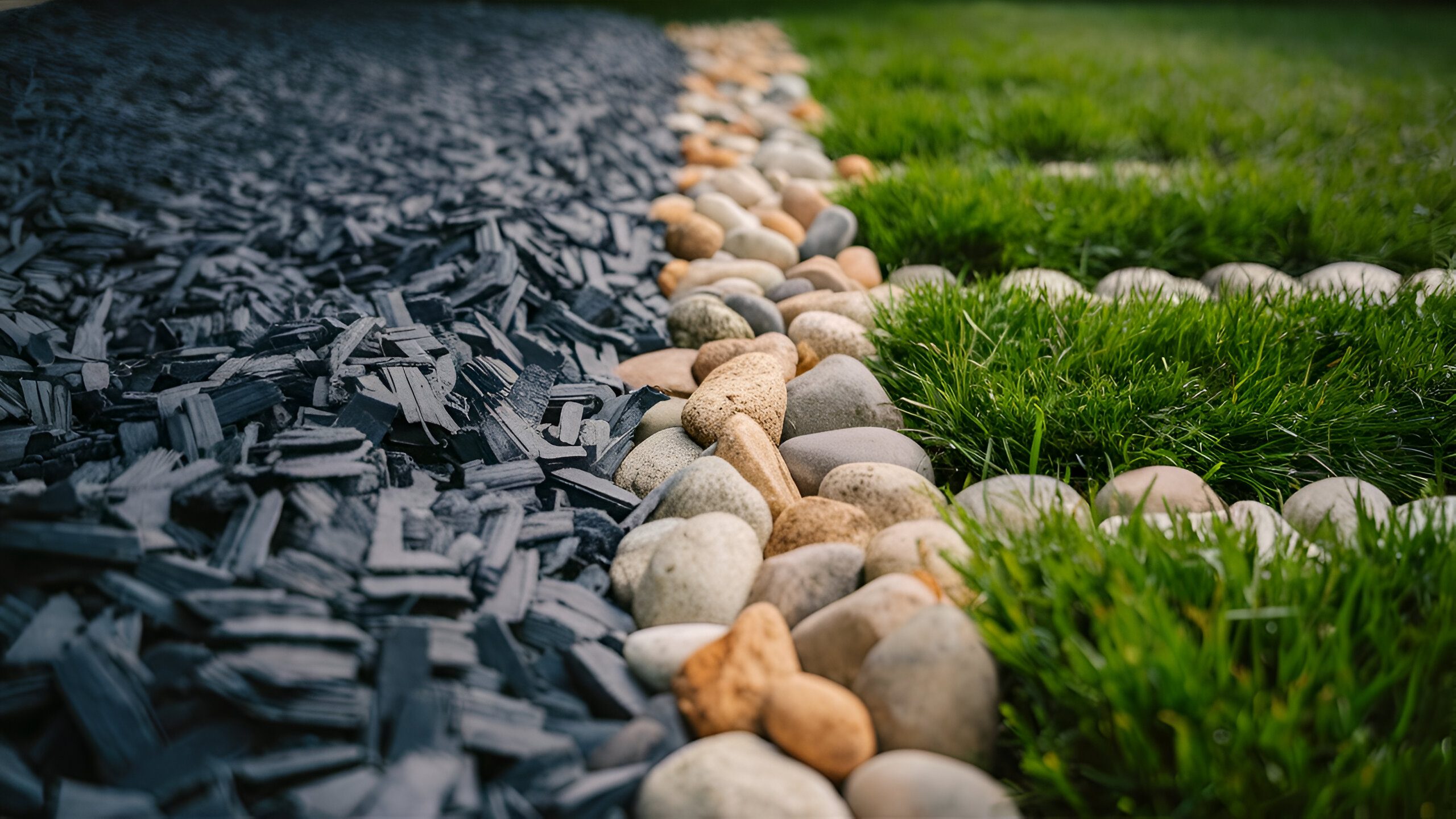Great mulch alternatives need to be able to succeed for the same reason you would choose mulch. Maybe you’re looking for something to increase soil health. Or maybe you’re just wanting an alternative that protects your plants, or is a beautiful and low-maintenance groundcover. You see, choosing the best mulch alternative depends upon your gardening or landscaping goals. And you’ve got plenty of options.
So, let’s explore some of the best mulch alternatives. Their pros, their cons, and their quirks!
Why Consider Mulch Alternatives?
Now, I know what you’re thinking: “Why fix what ain’t broke?” Well, my friends, while traditional wood mulch is great, it’s not the only player in the game. Alternatives to mulch can offer a slew of benefits, from improved soil health to unique aesthetic appeal. Plus, let’s face it – sometimes you just want to change the look of your garden!
In my early days of gardening, I was a die-hard wood mulch fan. I’d spread it religiously every spring, feeling quite pleased with myself. But then came the Great Mulch Mishap of 2015. Picture this: a sudden downpour, a sloped garden bed, and half my mulch deciding to take a trip down the driveway. It was then that I realized maybe, just maybe, there might be better options out there.
1. Organic Compost
First up on our mulch alternative hit parade is organic compost. This stuff is like a superfood smoothie for your soil. It’s packed with nutrients, improves soil structure, and helps retain moisture. Plus, you can make it yourself from kitchen scraps and yard waste. Talk about a win-win!
Pros:
1. Nutrient-rich: Compost adds valuable nutrients to the soil, feeding your plants as it breaks down.
2. Improves soil structure: It enhances soil texture, promoting better water retention and root growth.
3. Environmentally friendly: Made from recycled organic matter, it’s a sustainable choice.
4. Weed suppression: A layer of compost can help prevent weed growth.
5. Moisture retention: Compost helps retain soil moisture, reducing the need for frequent watering.
6. Encourages beneficial organisms: It promotes a healthy ecosystem of beneficial microbes and insects in your soil.
7. Cost-effective: If you make your own, it’s essentially free.
8. Versatile: Suitable for most types of plants and gardens.
Cons:
1. Short-lived: Compost breaks down faster than other mulch types, requiring more frequent reapplication.
2. Less aesthetic appeal: It may not look as tidy or uniform as other mulch options.
3. Potential odor: If not fully decomposed, it might have an unpleasant smell.
4. May attract pests: Fresh compost can sometimes attract unwanted insects or animals.
5. Nutrient imbalance: If not properly prepared, it might lead to an excess of certain nutrients.
6. Weed seeds: Homemade compost may contain weed seeds if the composting process didn’t reach high enough temperatures.
7. Labor-intensive: If making your own, it requires time and effort to produce quality compost.
8. Inconsistent texture: Homemade compost can vary in texture and composition, making even application challenging.
I remember trying out compost as mulch for the first time. I really wanted to love the experience, but I have to admit that the smell was often a struggle, folks. But I can’t complain about the results. I definitely sent far less food waste into the trash, and let me tell you, those were the juiciest tomatoes I’ve ever grown!
Pro tip: If you’re using homemade compost, make sure it’s well-decomposed before applying. Unless, of course, you want your garden to smell like last week’s forgotten leftovers.
2. Wood Chips and Bark
Okay, I know what you’re thinking – “Isn’t this just regular mulch?” Not quite! While similar to traditional mulch, wood chips and bark are typically larger and last longer. They’re great for suppressing weeds and retaining moisture, plus they give your garden a natural, rustic look.
Pros:
1. Long-lasting: Wood chips and bark decompose slowly, requiring less frequent replacement than other organic mulches.
2. Excellent weed suppression: The larger pieces create an effective barrier against weed growth.
3. Moisture retention: They help retain soil moisture, reducing watering needs.
4. Temperature regulation: Provide insulation, keeping soil cooler in summer and warmer in winter.
5. Aesthetically pleasing: Offer a natural, rustic look that enhances landscape appearance.
6. Improves soil structure: As they decompose, they add organic matter to the soil.
7. Environmentally friendly: Often made from recycled trees or lumber waste.
8. Erosion control: Helps prevent soil erosion, especially on slopes.
9. Biodegradable: Unlike inorganic mulches, they break down naturally over time.
Cons:
1. Nitrogen depletion: As they decompose, wood chips can temporarily deplete soil nitrogen, potentially affecting plant growth.
2. Alkaline pH: Some types, especially cedar, can increase soil alkalinity, which may not suit acid-loving plants.
3. Pest attraction: Can potentially harbor insects or provide a habitat for unwanted pests.
4. Fungal growth: In consistently moist conditions, wood chips may promote fungal growth.
5. Cost: Can be more expensive than some other mulch options, especially if purchased in bags.
6. Labor-intensive: Spreading wood chips, especially larger chunks, can be physically demanding.
7. Potential toxicity: Some wood types (like black walnut) can be toxic to certain plants.
8. Compaction: Over time, wood chips can form a compacted layer that’s difficult for water to penetrate.
9. Fire risk: In very dry conditions, wood chips can pose a fire hazard.
You just have to remember that the effectiveness of wood chips and bark as mulch can vary depending on the type of wood, the size of the chips, and how they’re applied. For many gardeners, the long-lasting nature and aesthetic appeal of wood chips make them a popular choice despite some potential drawbacks.
3. Artificial Grass
Now, hear me out on this one. Artificial grass isn’t just for mini-golf courses anymore! It can be a fantastic, low-maintenance mulch alternative, especially in areas where you want a polished look year-round.
Pros:
1. Low maintenance: No mowing, watering, or fertilizing required.
2. Year-round aesthetics: Stays green and uniform regardless of weather conditions.
3. Durability: Can last for many years with proper care, reducing the need for frequent replacement.
4. Water conservation: Eliminates the need for watering, saving a significant amount of water.
5. Weed suppression: Provides an effective barrier against weed growth.
6. Pet-friendly: Easy to clean and doesn’t get muddy, reducing tracked-in dirt.
7. Allergy-friendly: Doesn’t produce pollen, beneficial for allergy sufferers.
8. Versatility: Can be used in areas where real grass struggles to grow, like shaded spots.
9. Consistent appearance: Maintains a manicured look with minimal effort.
Cons:
1. Initial cost: Higher upfront investment compared to most natural mulch options.
2. Environmental concerns: Made from synthetic materials, not biodegradable.
3. Heat retention: Can get hot in direct sunlight, potentially affecting nearby plants.
4. Lack of soil benefits: Doesn’t improve soil structure or add nutrients like organic mulches.
5. Drainage issues: If not installed properly, it can lead to drainage problems.
6. Artificial look: Some may find it lacks the natural aesthetic of real plants or organic mulches.
7. Habitat reduction: Doesn’t provide a natural habitat for beneficial insects and microorganisms.
8. Potential toxicity: Some types may leach chemicals into the soil over time.
9. Difficult to remove: Once installed, it can be challenging and costly to remove if you change your mind.
10. Limited plant integration: Makes it harder to add or change plants in the covered area.
Remember, while artificial grass can be an effective low-maintenance ground cover, it’s important to consider its long-term environmental impact and how it fits with your overall gardening goals. It won’t contribute to your soil health like organic options. It’s best suited for specific areas rather than as a wholesale replacement for natural ground covers or mulches throughout a garden.
If you’d like to know more about using artificial grass in your yard or garden, give the Artificial Turf Supply team a call at (866) 677-9405.
Or feel free to get a free quote today!
4. Gravel or Stone
For those of you with a flair for the dramatic, gravel or stone can make a stunning mulch alternative. It’s perfect for creating a modern, low-maintenance landscape. Plus, it’s excellent for drainage and doesn’t blow away in high winds.
Pros:
1. Long-lasting: Extremely durable, doesn’t decompose or need frequent replacement.
2. Low maintenance: Requires little upkeep once installed.
3. Excellent drainage: Allows water to penetrate easily into the soil.
4. Weed suppression: Creates an effective barrier against weed growth.
5. Aesthetically versatile: Available in various colors, sizes, and textures to suit different landscape designs.
6. Fire-resistant: Unlike organic mulches, stone doesn’t pose a fire hazard.
7. Wind-resistant: Doesn’t blow away in strong winds.
8. Pest-resistant: Doesn’t attract insects or harbor pests.
9. Temperature regulation: Can help regulate soil temperature, especially lighter-colored stones.
10. Erosion control: Effective at preventing soil erosion, particularly on slopes.
Cons:
1. Initial cost: Can be more expensive upfront compared to organic mulches.
2. Weight: Heavy to transport and install, which can be labor-intensive.
3. Soil compaction: Over time, the weight of stones can compact the soil underneath.
4. Heat retention: Dark-colored stones can absorb and radiate heat, potentially stressing nearby plants.
5. Alkalinity: Some types of stone can gradually increase soil pH, affecting acid-loving plants.
6. Difficult to remove: Once installed, it can be challenging to remove or change.
7. No nutrient addition: Unlike organic mulches, stones don’t improve soil fertility as they don’t decompose.
8. Potential soil contamination: Some stone types may leach minerals into the soil.
9. Plant debris: Leaves and other organic matter can get trapped between stones, requiring occasional cleaning.
10. Splashing: During heavy rain, soil can splash onto plants from the hard surface of stones.
11. Migration: Smaller gravel pieces can migrate into the lawn or other areas of the garden.
Gravel or stone’s effectiveness as mulch can vary depending on the specific type, the climate, and your plants’ needs. You get great durability and low maintenance. But you want to think about the long-term effects on soil health and the overall ecosystem of your garden. I recommend using this for specific areas rather than as a universal mulch solution.
A Quick Word of Caution: Stones can get real hot in the sun, so they’re best for heat-loving plants. Don’t fry your flowers like eggs on a sidewalk.
5. Rubber Mulch
Last but not least, let’s talk about rubber mulch. Made from recycled tires, this option is durable, long-lasting, and comes in a variety of colors. It’s great for playgrounds and areas where you need a soft landing.
Pros:
1. Longevity: Extremely durable, can last up to 10 years or more without needing replacement.
2. Low maintenance: Doesn’t decompose, compact, or blow away, requiring minimal upkeep.
3. Weed suppression: Forms an effective barrier against weed growth.
4. Water conservation: Allows water to penetrate while reducing evaporation from the soil.
5. Temperature insulation: Helps regulate soil temperature, protecting plant roots from extreme heat or cold.
6. Safety: Provides a softer surface, making it ideal for playgrounds or areas where falls are a concern.
7. Pest resistant: Doesn’t attract insects or harbor pests like some organic mulches.
8. Color variety: Available in various colors that don’t fade, allowing for diverse landscape designs.
9. Eco-friendly aspect: Made from recycled tires, repurposing waste materials.
10. Non-absorbent: Doesn’t absorb water, reducing the risk of mold or fungal growth.
Cons:
1. Environmental concerns: Non-biodegradable and may leach chemicals into the soil over time.
2. Initial cost: Generally more expensive upfront compared to organic mulches.
3. Potential toxicity: May contain harmful chemicals that could affect soil and plant health.
4. Fire hazard: Can be flammable and difficult to extinguish if ignited.
5. Heat retention: Dark colors can absorb and radiate heat, potentially stressing nearby plants.
6. Odor: May emit a rubber smell, especially when new or during hot weather.
7. Flotation: Can float away in areas prone to flooding or heavy rain.
8. Soil depletion: Doesn’t contribute nutrients to the soil as it breaks down.
9. Difficult to remove: Once installed, it can be challenging and time-consuming to remove completely.
10. Aesthetic concerns: Some gardeners find it looks artificial or out of place in natural settings.
11. Zinc accumulation: Can lead to zinc buildup in the soil, which may be harmful to some plants.
12. Microplastic pollution: As it breaks down over time, it may contribute to microplastic pollution.
Remember, while rubber mulch offers some unique benefits, particularly in terms of durability and safety for play areas, it’s important to carefully consider its long-term environmental impact. Its use in vegetable gardens or areas where soil health is a primary concern is often discouraged by horticultural experts. As with any mulch alternative, it’s crucial to weigh these pros and cons against your specific needs and environmental considerations.
We actually tried rubber mulch around my kids’ play area. It’s been a game-changer. No more muddy footprints in the house, and it cushions falls better than any other mulch I’ve tried. Just know that it doesn’t decompose, so it won’t improve your soil quality.
6. Other Great Mulch Alternatives
With so many reasons to use mulch, is it surprising that there’d be a wide world of other mulch alternatives worth mentioning? Pine needles, leaves, straw, and even newspaper can all make effective mulches. Each has its own unique benefits and quirks, so don’t be afraid to experiment!
-
- Shredded Leaves
- rass Clippings
- Straw or Hay
- Pine Needles or Strawberries
- Newspaper or Cardboard
- River rocks
- Crushed shells
- Pine needles
- Leaves
- Straw or hay
- Living ground covers (e.g., creeping thyme, moss)
- Landscape fabric
- Cocoa hulls
So Mulch To Do!
The world of mulch alternatives is vast and varied, my friends. It’s a good thing there are so many reasons to use mulch: improve your soil health, provide ground cover, reduce maintenance, beautify your garden, and more.
And remember, gardening is all about experimentation. What works in one garden might not work in another, so don’t be afraid to try different options. And if all else fails, you can always go back to good old wood mulch. Classics are classic for a reason, right?
Happy landscaping, everyone!







